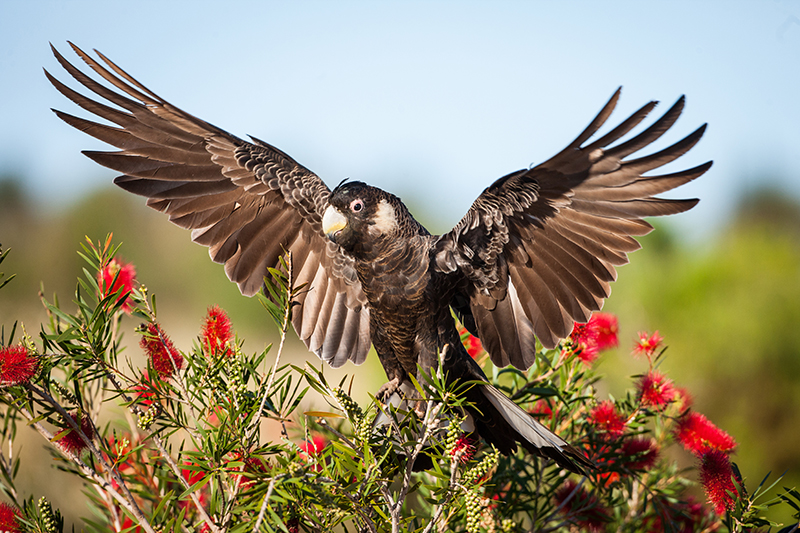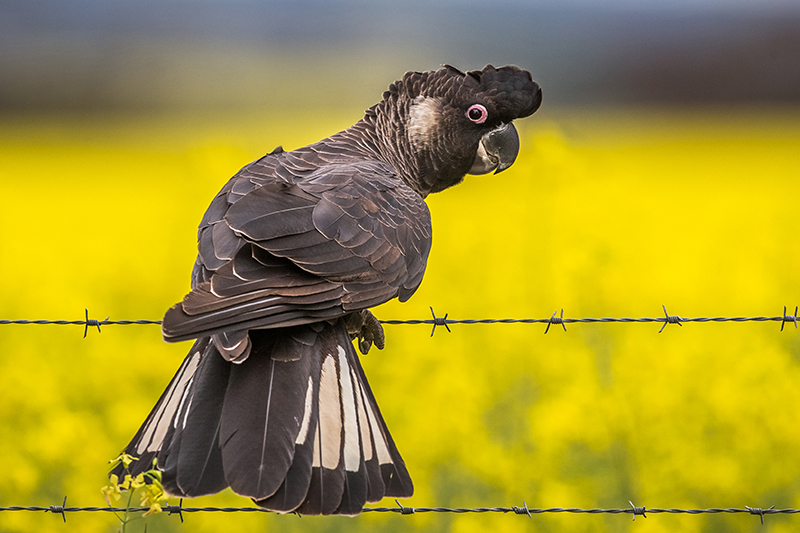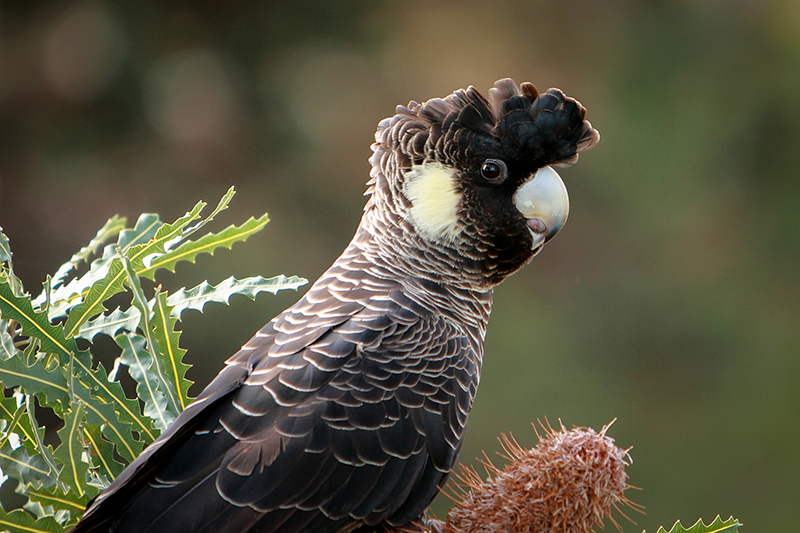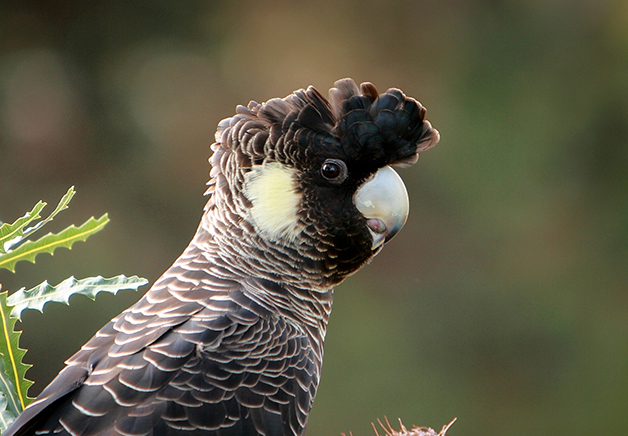Calyptorhynchus latirostris | Short-billed Cockatoo, White-tailed Black Cockatoo, Rainbird or Ngoorlak
Description
Large, white-tailed, black cockatoos that grow to 56cm. Males have a dark bill and pink/red eye-ring, while females have a paler grey bill and grey eye-rings. Both sexes have a large white patches on the cheek. Their flight is uniquely slow and elegant.
Call
Distinctive ‘wee-la’ that is softer than, but sometimes confused with, the harsher call of the Red-tailed Black Cockatoo.

Image: Georgina Steytler
Habits and Habitat
Carnaby’s Black Cockatoos spend the summer months on the Swan Coastal Plain, in Jarrah/Marri forests or Banksia Woodland, and in coastal areas along the south west and south coast of Western Australia.
They are frequently seen feeding in large flocks in shrublands, along roadsides and in Marri trees. Pine forests are also popular, including in the Gnangara area north of Perth. Unfortunately, the cockatoos are often killed by road traffic when they fly low out of roadside vegetation – one of the reasons their population is declining.

Image: Georgina Steytler
Breeding and Feeding
During the breading season, the cockatoos generally move east and inland into the farming landscape where they separate into smaller groups and pairs. They seek Eucalypt woodlands of 120-150 years old, usually with Salmon Gums and Wandoos that are big and old enough to have large enough tree hollows for nesting. Adult pairs mate for life and return to the same breading site year after year.
During egg incubation, the male bird feeds the female at the nest and flies up to 12km between the nest and food sources. One popular food source is Kwongan heathlands with its biodiverse mix of species, such as Banksias and Hakeas.
Land clearing has fragmented these landscapes and restricted access to suitable woodlands and Kwongan heath. As a result, adult cockatoos need to fly further to feed their young and in some cases cannot provide sufficient food for their young to survive to fledge.
Providing artificial nesting hollows for Carnaby’s Black Cockatoos and revegetating near nesting areas with preferred food species can go some way towards protecting this species into the future.
The presence of Carnaby’s Black Cockatoos can be determined by sightings or calls and by identifying Marri nuts that have been chewed distinctively by the birds.

Image: Georgina Steytler


